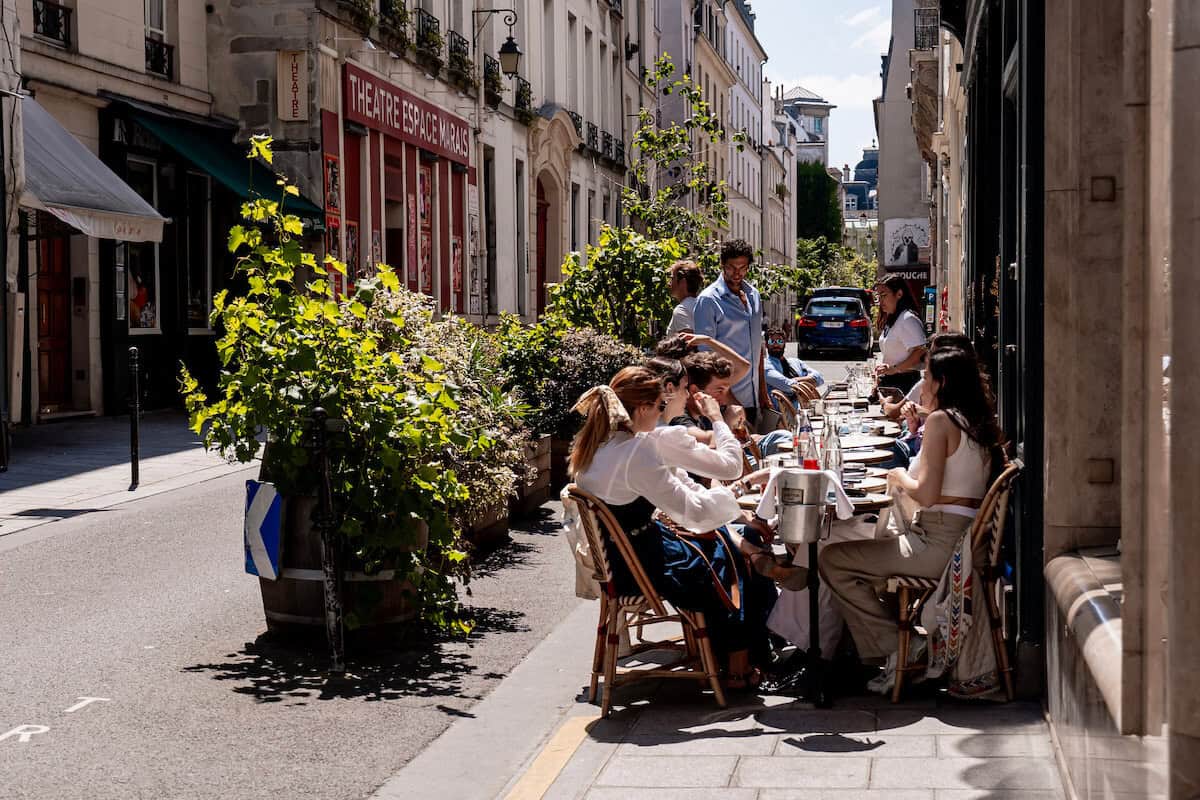In pictures: Europe’s car-free plazas reclaim their former glory
Why are we so comfortable filling our most iconic public spaces with a bunch of metal boxes?

In pictures: Europe’s car-free plazas reclaim their former glory
Why are we so comfortable filling our most iconic public spaces with a bunch of metal boxes?
By AITOR HERNÁNDEZ-MORALES

Creative Commons via Wikipedia
This article is part of The New Commute, a special report on urban mobility in Europe from POLITICO’s Global Policy Lab: Living Cities. Sign up here.
Few would argue that cultural heritage shouldn’t be preserved and protected — but that hasn’t stopped numerous cities from literally turning their iconic urban spaces into parking lots.
Across the European Union are countless examples of prized urban spaces being used as repositories for automobiles. In central Brussels, a 17th-century statue of Minerva overlooks a sea of parked cars that separate it from the medieval Church of Notre Dame du Sablon. Lille’s 500-year-old Rihour Palace is surrounded by vehicles, while people still park in Vienna’s imperial Heldenplatz. Even the Vatican’s Cortile del Belvedere — Bramante’s masterpiece of High Renaissance architecture — spends its days full of metal boxes.
It doesn’t have to be so.
For more than 80 years activists have worked to get local leaders to liberate public spaces degraded by parking spots. Small Italian cities like Siena, which banished cars from the Piazza del Campo in 1962, were among the first; just four years later major capitals like Madrid were following suit, kicking cars out of public squares including the Plaza Mayor.
Inspired by Rome’s decision to ban cars by the Trevi Fountain and throughout Piazza Navona in the late 1960s, expat journalist John Lambert in 1971 launched a successful campaign to get automobiles out of his adopted city of Brussels’ Grand Place. Articles from the period indicate that local shopkeepers strongly opposed the measure — but got over their qualms once they saw the car-less square was more attractive to tourists keen to spend cash at their establishments. The change was further vindicated in 1998, when the Gothic, Baroque — and car-free — square was recognized as a UNESCO World Heritage Site.
Today’s city-hopping tourists may be shocked to discover just how recently some of their favorite selfie spots were glorified parking lots. Cars filled Lisbon’s central Praça do Comércio until 1997, and Florence only banned parking in the Piazzale Michelangelo — which has the best views overlooking the city — in 2014.
The cities that have taken this step are all very different, but the dramatic transformation of their iconic squares — recovered for residents and visitors alike to enjoy — raises the question of why such spaces were allowed to be dominated by cars for so long.
Grand Place, Brussels
Above: Brussels’ Grand Place in 1966. | Creative Commons via Wikipedia
Below: Grand Place today. | Creative Commons via Wikipedia
Plaza Mayor, Spain
Above: Madrid’s Plaza Mayor in the 1960s. | Creative Commons via Wikipedia
Below: Plaza Mayor today. | Creative Commons via Wikipedia
Nieuwmarkt, Amsterdam
Above: Amsterdam’s Nieuwmarkt in 1975. | Creative Commons via Wikipedia
Below: Nieuwmarkt today. | Creative Commons via Wikipedia
Praça do Comércio, Lisbon
Above: Lisbon’s Praça do Comércio in the 1960s. | Municipal Archive of Lisbon
Below: Lisbon’s Praça do Comércio today. | Creative Commons via Wikipedia
Piazza Colonna, Rome
Above: Rome’s Piazza Colonna in 1969. | Creative Commons via Wikipedia
Below: Piazza Colonna now. | Creative Commons via Wikipedia
What's Your Reaction?


























:quality(85):upscale()/2025/02/27/808/n/1922398/26784cf967c0adcd4c0950.54527747_.jpg)
:quality(85):upscale()/2025/02/03/788/n/1922283/010b439467a1031f886f32.95387981_.jpg)
:quality(85):upscale()/2025/01/08/844/n/1922398/cde2aeac677eceef03f2d1.00424146_.jpg)
:quality(85):upscale()/2024/11/27/891/n/1922398/123acea767477facdac4d4.08554212_.jpg)


















